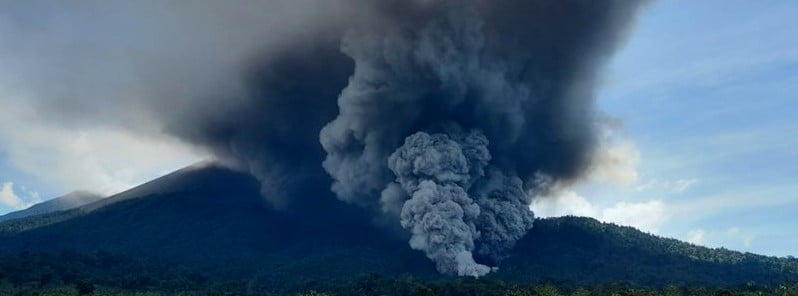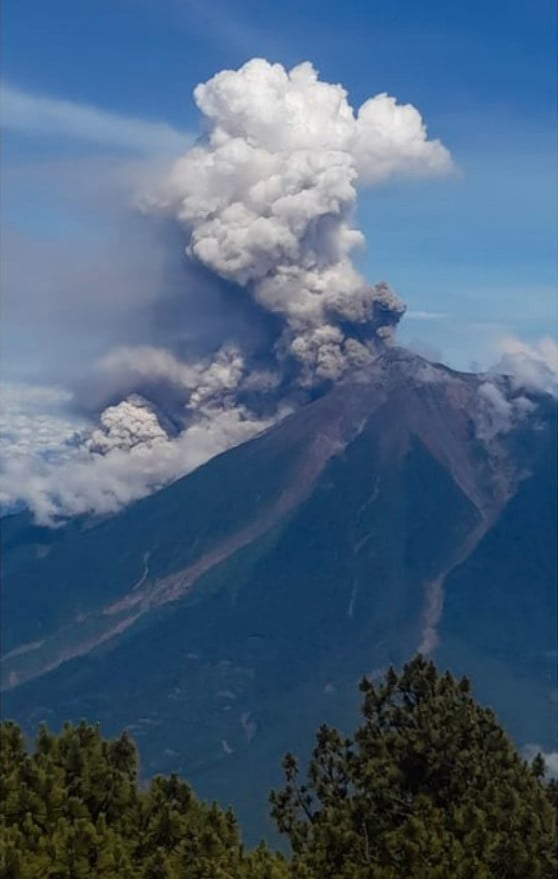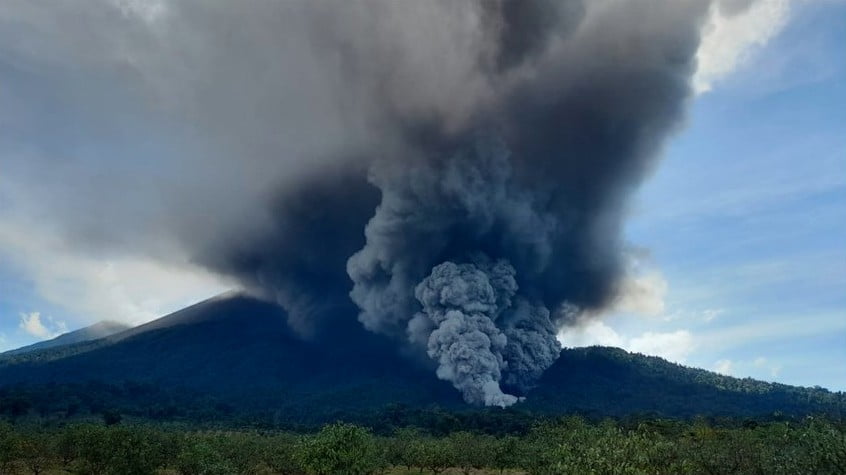Strong eruptive activity at Fuego volcano, large pyroclastic flows produced, Guatemala

Volcanic activity at Guatemala’s Fuego volcano intensified on July 2, 2022, with abundant degassing and new lava flow reaching at least 1 km (0.6 miles).
The activity further intensified on July 4, resulting in pyroclastic flows that reached about 6 km (3.7 miles) from the crater toward the Ceniza drainage. The resulting ash plume reached approximately 5 km (16 400 feet) above sea level.


Fine volcanic ash was rained down on the nearby communities of Panimaché I and II, Morelia, Santa Sofia, Yucales, Palo Verde, El Porvenir, La Rochela, Guadalupe, and El Zapote.1
Weak gray fumaroles reached a height of 4.6 km (13 100 feet) a.s.l., drifting SW and W, on July 5.2
There were 5 to 8 weak, moderate and some strong explosions per hour today, generating a column of ash to 4.8 km (15 700 feet), spreading SW and W up to 12 km (7.4 miles).
An incandescent pulse was observed from 100 to 300 m (330 – 1 000 feet) above the crater, generating weak, moderate and strong avalanches in the crater and towards the Santa Teresa, Ceniza, Trinidad and Taniluyá ravines.
Weak and moderate sounds similar to a train locomotive were heard with a lapse of 1 to 2 minutes.
A fine ash fell in Panimaché I, Panimaché II, Morelia, Santa Sofía, El Porvenir, Finca Palo Verde, Yepocapa, etc.
A series of volcanic explosions and pyroclastic flows at the volcano on June 3, 2018, caused the deaths of 190 people and left 256 more missing (official numbers).
Local residents estimate that approximately 2 000 people have been buried and a local organization said that up to 2 900 may have died.
This was Guatemala’s deadliest eruption since 1929, even if we take the official numbers only.
Geological summary
Volcán Fuego, one of Central America’s most active volcanoes, is one of three large stratovolcanoes overlooking Guatemala’s former capital, Antigua. The scarp of an older edifice, Meseta, lies between 3 763 m (12 345 feet) high Fuego and its twin volcano to the north, Acatenango.
Construction of Meseta dates back to about 230 000 years and continued until the late Pleistocene or early Holocene. The collapse of Meseta may have produced the massive Escuintla debris-avalanche deposit, which extends about 50 km (31 miles) onto the Pacific coastal plain.
The growth of the modern Fuego volcano followed, continuing the southward migration of volcanism that began at Acatenango. In contrast to the mostly andesitic Acatenango, eruptions at Fuego have become more mafic with time, and most historical activity has produced basaltic rocks.
Frequent vigorous historical eruptions have been recorded since the onset of the Spanish era in 1524, and have produced major ashfalls, along with occasional pyroclastic flows and lava flows.3
References:
1 BOLETÍN VULCANOLÓGICO DIARIO – INSIVUMEH – July 4, 2022
2 BOLETÍN VULCANOLÓGICO DIARIO – INSIVUMEH – July 5, 2022
3 Fuego – Geological summary – GVP
Featured image credit: INSIVUMEH

Commenting rules and guidelines
We value the thoughts and opinions of our readers and welcome healthy discussions on our website. In order to maintain a respectful and positive community, we ask that all commenters follow these rules.